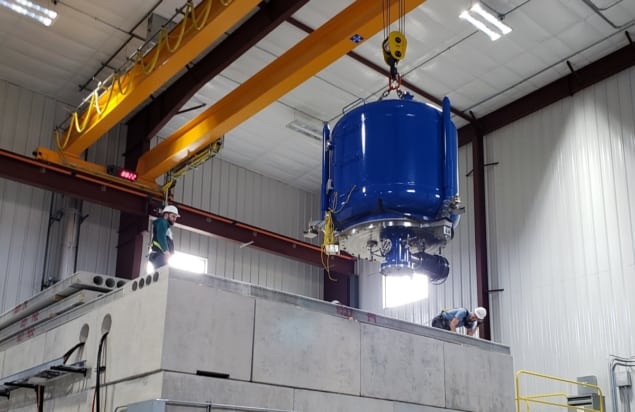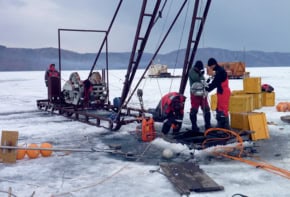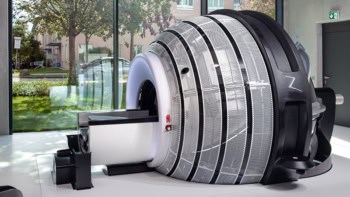
Nuclear technology companies Phoenix and SHINE Medical Technologies have achieved a new world record for a nuclear fusion reaction in a steady-state system, the strongest of its kind ever produced on Earth. The reaction yielded 46 trillion (4.6×1013) neutrons per second, eclipsing the previous record by nearly 25% and setting a new standard for neutron generator technology.
This breakthrough could prove great news for the field of nuclear medicine. SHINE was founded in 2010 to create a safe, cost-effective and environmentally-friendly technology to produce medical isotopes. And it’s using Phoenix’s high-flux neutron generators to achieve this.
In particular, the companies aim to resolve the ongoing global supply issues of molybdenum-99 (Mo-99), a radioisotope that decays into the diagnostic imaging agent technetium-99m (Tc-99m). The most prevalent nuclear medicine agent, Tc-99m is employed in tens of millions of medical diagnostic procedures each year, primarily in stress tests to diagnose heart disease or to stage cancer.
Mo-99, however, is currently generated using a handful of ageing nuclear reactors, shutdowns of which have led to serious supply shortages in the past. SHINE plans to replace the nuclear reactor with Phoenix’s low-energy, accelerator-based neutron generator.
The Phoenix system works by accelerating positively-charged deuterium ions into a target of tritium gas to induce a fusion reaction. This reaction results in the production of high-energy neutrons and helium. These neutrons then pass into a tank and strike their target: low-enriched uranium (LEU) dissolved in an aqueous solution. This causes the uranium nuclei to split and create multiple elements, including Mo-99 and other useful isotopes.
As well as eliminating the need for nuclear reactor facilities, the technology’s use of LEU (containing less than 20% U-235) confers a major security advantage. Until recently, most Mo-99 production used targets of weapons-grade highly-enriched uranium (HEU), which contains 20% or more U-235. LEU, however, cannot be used to create nuclear weapons weaponized without highly sophisticated modifications and is thus considered far less of a risk.
Preparing for production
The record-breaking fusion reaction was achieved during a demonstration of Phoenix’s third-generation neutron generator, as part of ongoing preparation for full-scale operation of the medical isotope production facility. “The higher neutron yield from the Phoenix system will increase the efficiency of the whole production process,” notes Phoenix’s president Evan Sengbusch. “Additionally, the demonstration of such a strong neutron source opens the door to other high-flux neutron applications in materials characterization, imaging and fusion energy.”
The companies have also performed a 132-hr test run on the neutron generator, which demonstrated more than 99% uptime. These successful tests validate the performance and reliability of the Phoenix neutron generator technology and confirm its status as a “steady-state system” than can operate at high output for long stretches of time. This sets it apart from other high output fusion systems, which have only operated in a pulsed mode over short durations.

Battle of the elements: technetium-99m diagnoses disease then decays away
SHINE anticipates that isotope production will begin in 2021. “Before that, the production facility needs to be built and the target solution needs to be tested,” explains Greg Piefer, SHINE’s CEO and founder, and founder and former CEO of Phoenix. The company began construction of its commercial facility in spring of this year. It will contain eight Mo-99 production units, each with its own Phoenix neutron generator, and once operational will be capable of producing enough isotope to satisfy one-third of global demand.
“The world-record proves the accelerator technology is suitable to produce medical isotopes at the scale required to support a robust business case,” says Piefer. “It is also a stepping stone toward advancing fusion for other, more ambitious applications, including the recycling of nuclear waste and ultimately the creation of cleaner, safer and more abundant energy.”



